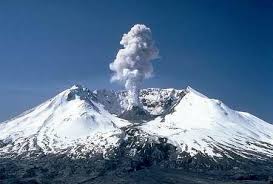Taftan Volcano:

New research shows that Taftan volcano in Iran seems to be waking up after a 700,000-year-long sleep.
- It is a 12,927-foot (3,940 meters) semi-active stratovolcano located in southeastern Iran, 56 km from the Pakistan border.
- It is the only active volcano in the Makran continental volcanic arc.
- It is situated among a rump of mountains and volcanoes that was formed by the subduction of the Arabian ocean crust under the Eurasian continent.
- It hosts an active hydrothermal system and smelly, sulfur-emitting vents called fumaroles.
- The volcano contains two summits (Narkuh and Matherkuh).
- It isn’t known to have erupted in human history.
- Stratovolcano is a tall, steep, and cone-shaped type of volcano.
- Unlike flat shield volcanoes, they have higher peaks.
- They are typically found above subduction zones, and they are often part of large volcanically active regions, such as the Ring of Fire that frames much of the Pacific Ocean.
- Stratovolcanoes comprise the largest percentage (~60%) of the Earth’s individual volcanoes, and most are characterized by eruptions of andesite and dacite, lavas that are cooler and more viscous than basalt.




